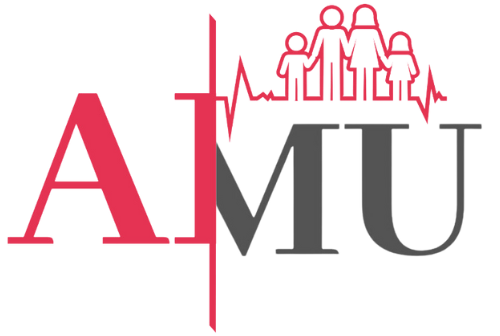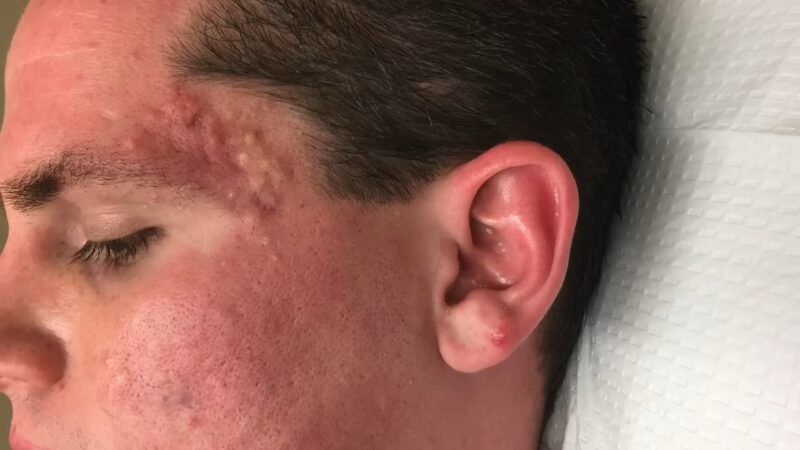Whiteheads might seem like tiny, uninvited guests on your face, but they’re more common than you think. They form when dead skin cells, oil, and dirt clog your pores.
Imagine your skin as a garden, and the pores are tiny holes where plants grow. If these holes are blocked, nothing can get in or out, creating a perfect environment for whiteheads to thrive.
Key Highlights
- Regular and gentle skincare routines are crucial for preventing and managing whiteheads.
- A balanced diet and healthy lifestyle habits can significantly impact skin health.
- Professional treatments like facials and chemical peels can effectively prevent whiteheads.
- Identifying and avoiding personal skin triggers are essential for maintaining clear skin.
What Causes Whiteheads?
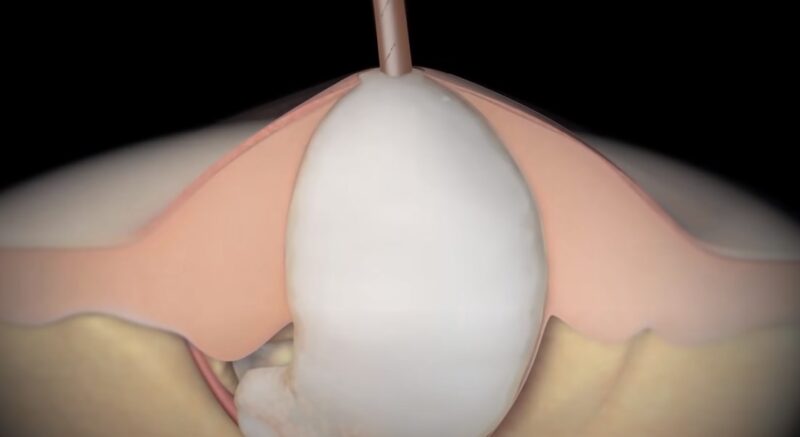
Whiteheads are a form of acne that appear as raised white bumps on the skin. They are different from pitting and are caused by clogged pores trapping sebum, a natural oil produced by your skin, along with dead skin cells and sometimes bacteria.
Unlike blackheads, which are open at the surface and get their color from the oxidation of sebum, whiteheads are closed and trapped under the skin.
Can You Pop Them?
As per Bukky Aremu, popping or picking at whiteheads can be tempting, but it’s a big no-no. Doing so can push the gunk deeper into your skin, leading to more irritation, infection, and even permanent scarring.
Methods That Remove Whiteheads Effectively
1. Keep Your Face Clean
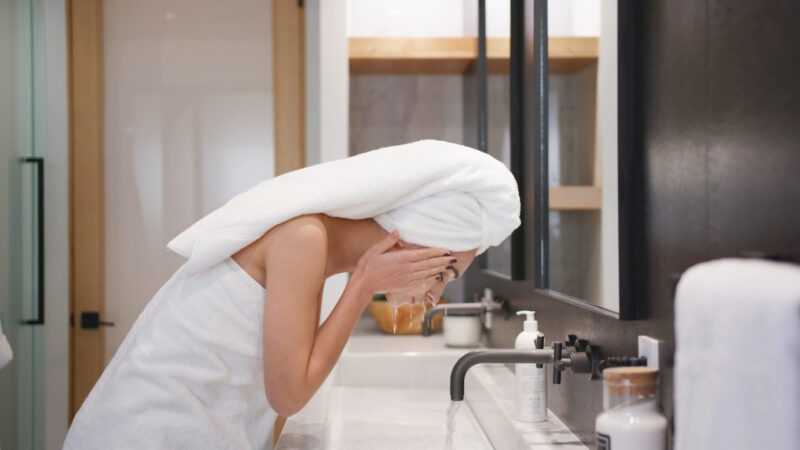
Washing your face twice a day with a gentle cleanser can work wonders. It helps remove excess oil, dirt, and dead skin cells that could clog pores.
Keep in mind that overwashing or using harsh products can irritate your skin and make things worse.
Andrea McLin listed some of the products and ingredients that you should absolutely avoid, especially if you have sensitive skin.
2. Use Over-the-Counter Treatments
Cynthia Cobb states that products containing benzoyl peroxide, salicylic acid, or retinoid creams are your best friends when it comes to fighting whiteheads. They help by:
- Reducing oil production
- Speeding up skin cell turnover
- Fighting bacterial infection
- Reducing inflammation
3. Try Home Remedies
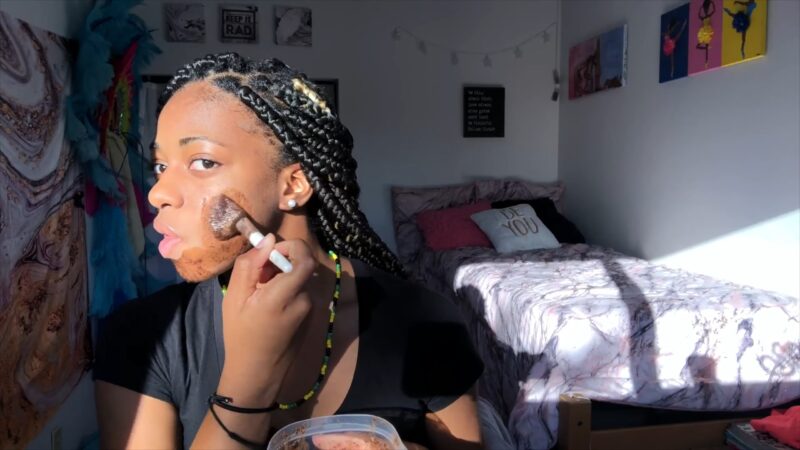
- Honey and Cinnamon Mask: A natural antibacterial and antiseptic, honey, combined with cinnamon, can help clear up whiteheads by pulling dirt and oil from your pores.
- Tea Tree Oil: With its powerful antibacterial properties, a dab of tea tree oil on whiteheads can help reduce them without being too harsh on the skin.
- Aloe Vera: Aloe vera is known for its soothing properties. Applying it to your skin can help heal whiteheads and reduce inflammation.
4. Adopt a Healthy Diet

What you eat affects your skin. Avoiding fried, sugary, and processed foods can decrease the likelihood of oil clogs.
Incorporating fruits, vegetables, and plenty of water into your diet can also help improve your skin’s health.
Amy Richter, RD, Nutrition, states that refined grains and sugars, dairy products, fast food, chocolate, whey protein powder, and foods you are sensitive to can contribute to whiteheads.
5. Choose the Right Skincare Products
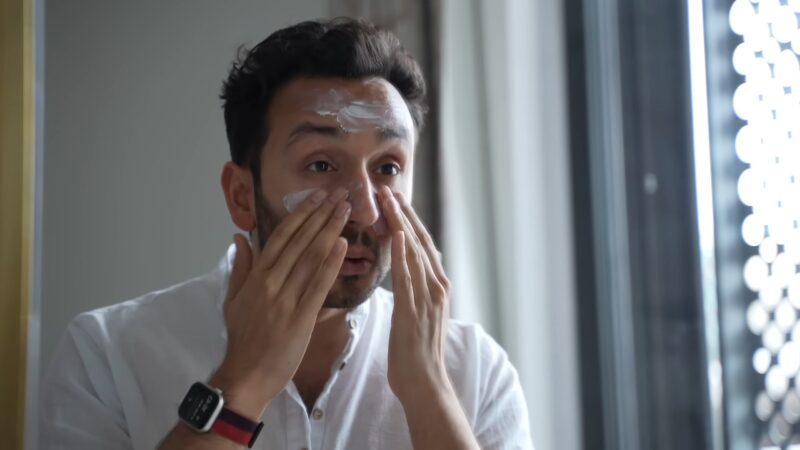
Opt for water-based and non-comedogenic makeup and skincare products. These are designed not to clog pores, reducing the risk of developing whiteheads.
6. Regular Exfoliation
Gentle exfoliation can remove dead skin cells that might clog pores. However, too much or too harsh exfoliation can damage your skin, so moderation is key.
7. Manage Stress and Get Enough Sleep
Stress and lack of sleep can both exacerbate skin problems, including whiteheads. Ensuring you’re well-rested and finding ways to manage stress can help keep your skin clear.
8. When to See a Dermatologist
If you’ve tried everything and your whiteheads still won’t budge, it might be time to see a dermatologist. They can prescribe stronger medications or recommend treatments like chemical peels or laser therapy.
Avoiding Triggers
Identifying and avoiding personal skin triggers is an essential part of a long-term strategy against whiteheads. Everyone’s skin is different, so what irritates your skin might be fine for someone else.
Pay attention to when your skin breaks out. Is it after eating certain foods? Using a specific product? Or perhaps when you’re stressed? Recognize these patterns and you will be able to adjust your habits accordingly.
Diet Adjustments
What you eat can impact your skin. Studies suggest a link between dairy, high-glycemic foods, and acne.
Try reducing these foods to see if your skin improves. Instead, focus on a diet rich in fruits, vegetables, whole grains, and lean proteins.
Stress Reduction
Chronic stress can wreak havoc on your skin by increasing cortisol levels, which in turn can boost oil production.
Finding effective stress management techniques, such as exercise, meditation, or journaling, can help keep your skin clearer.
Sleep Quality

Never underestimate the power of a good night’s sleep. Sleep is when your body, including your skin, heals and rejuvenates.
Lack of sleep can increase stress and, subsequently, skin problems. Aim for 7-9 hours of quality sleep each night.
Product Considerations
Choose Products Wisely
- Read Labels: Look for products labeled as non-comedogenic. These are less likely to clog pores. Be cautious with products containing oils, as some can exacerbate whitehead formation.
Sun Protection
- Use Sunscreen: Sun damage can worsen acne and lead to more significant skin issues. Use a broad-spectrum SPF 30 or higher every day, even when it’s cloudy.
Be Mindful of Makeup
- Opt for Mineral Makeup: Heavy makeup can clog pores. Mineral-based products are lighter and less likely to cause breakouts. Always remove makeup before going to bed.
Advanced Skincare Techniques
- Regular Facials: Professional facials can provide a deeper cleanse than you can achieve at home. Estheticians can also extract whiteheads safely, reducing the risk of scarring or infection.
- Chemical Peels: Chemical peels remove the top layer of skin, helping to unclog pores and remove dead skin cells. They can be effective in preventing and treating whiteheads when done by a professional.
- Microdermabrasion:This is a slightly less invasive procedure than chemical peels, designed to exfoliate the skin. It can help prevent whiteheads by removing the outer layer of dead skin cells and unclogging pores.
FAQs
What’s the Difference Between Whiteheads and Blackheads?
Whiteheads are closed comedones, meaning the pore is completely blocked. Blackheads are open comedones, where the pore is open, and the sebum has oxidized, turning it black.
Are Whiteheads the Same as Pustules?
No, whiteheads are early acne formations and stay under the skin. Pustules are more advanced, with the walls of the pore breaking down, leading to larger, inflamed bumps.
Can Diet Really Affect Whiteheads?
Yes, diet plays a role in skin health. Foods high in sugar and dairy can increase sebum production and the likelihood of clogged pores.
Can drinking water help prevent whiteheads?
Yes, staying hydrated helps maintain skin health, potentially reducing the likelihood of clogged pores that lead to whiteheads.
Are whiteheads contagious?
No, whiteheads are not contagious. They result from clogged pores, not from bacteria or viruses that can be spread from person to person.
Can changing pillowcases help with whiteheads?
Yes, regularly changing your pillowcase can reduce the buildup of oil and skin cells, which could otherwise clog pores.
Does sweating cause whiteheads?
Sweating itself does not cause whiteheads, but not washing your face after sweating can lead to clogged pores.
Final Words
Removing whiteheads and maintaining clear skin is a combination of proper skin care, healthy lifestyle choices, and sometimes professional help.
Bear in mind that each skin is unique, so what works for one person might not work for another. It’s all about finding the right balance and treatment that suits your skin type.
Keep these tips in mind, and you’ll be on your way to clearer, healthier skin in no time.
